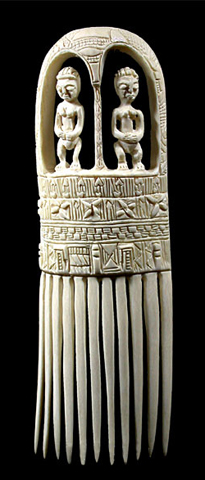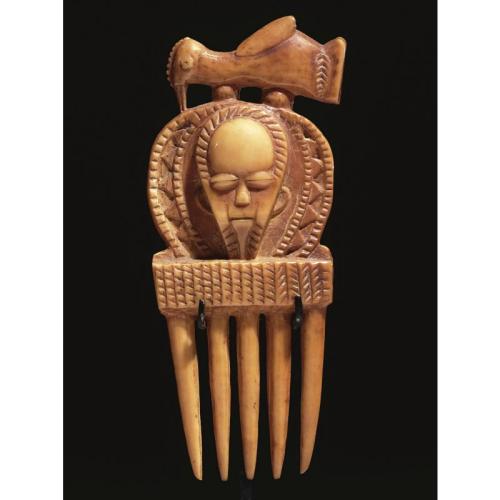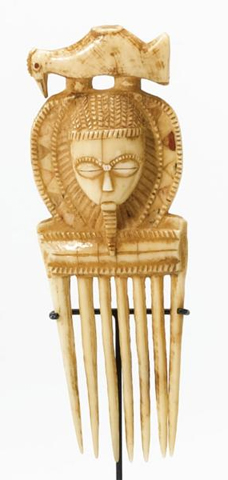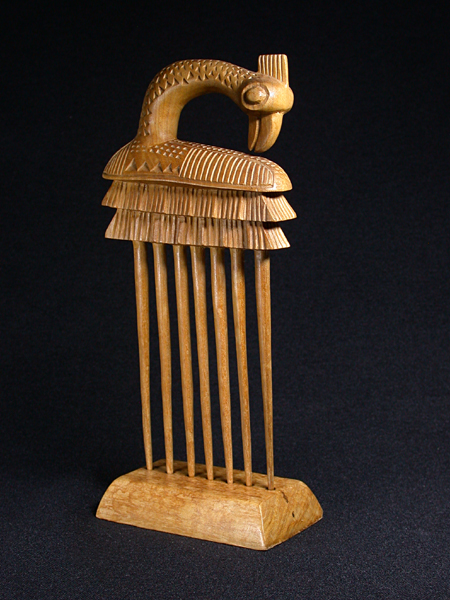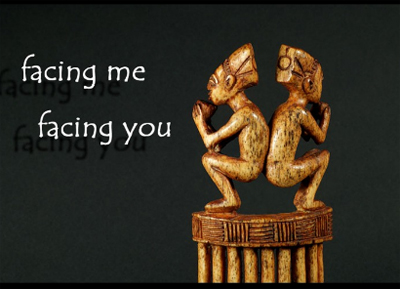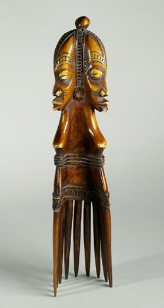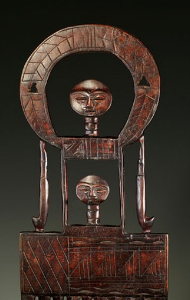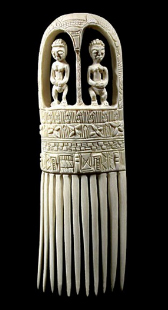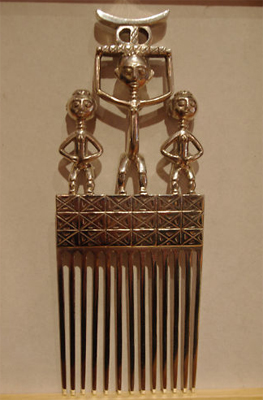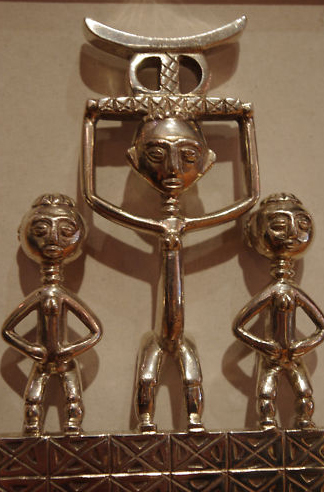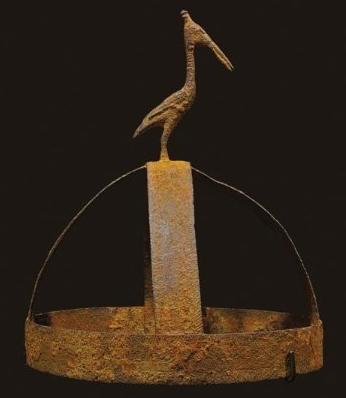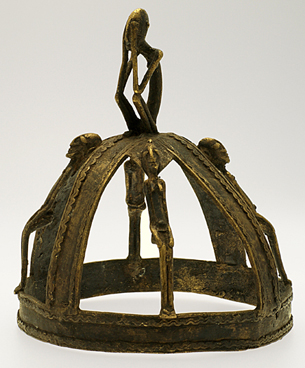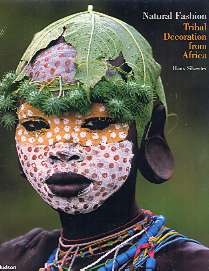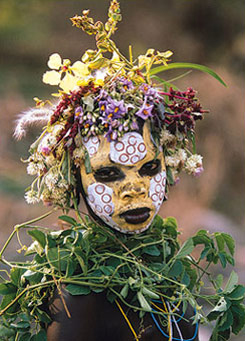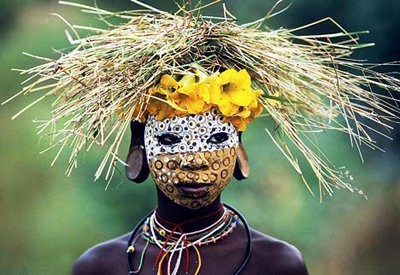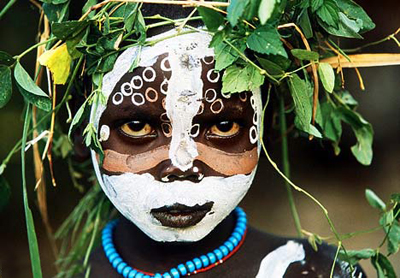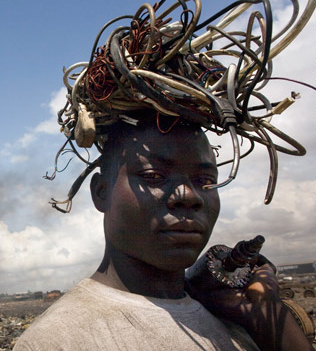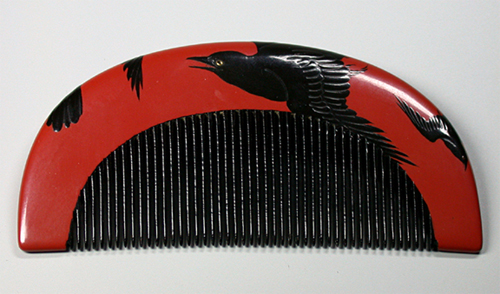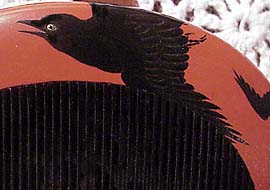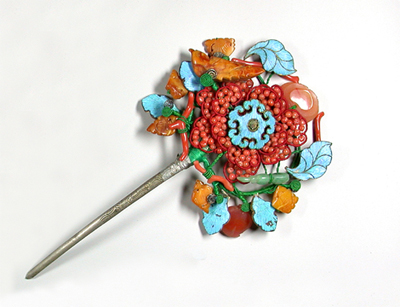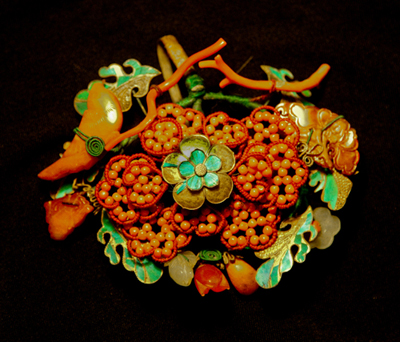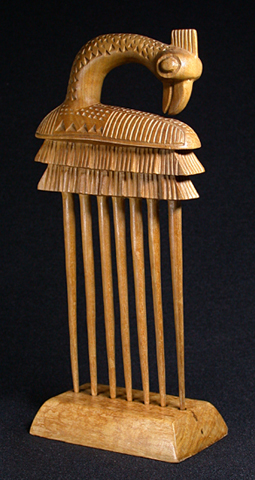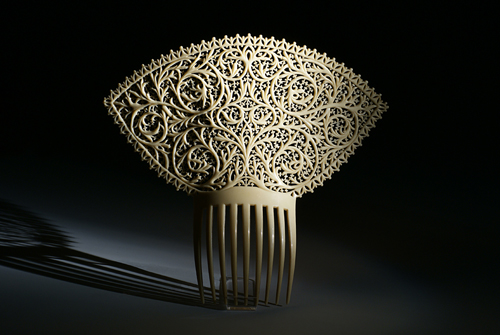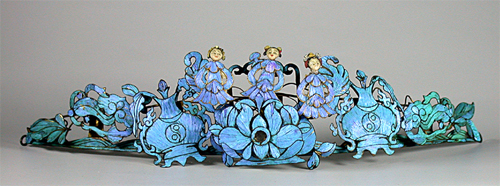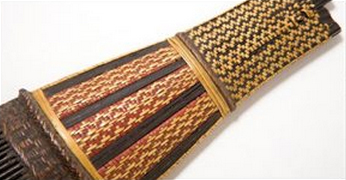Catherine Olliveaud and Alain Touzinaud, whose inspiring collection is featured in The Creative Museum have acquired some notable pieces of African art, which has a rich tradition of anthropomorphism, or carving emotions into animals, which display a profound understanding of the human condition.
From the Akan people of Ghana, this painted wood comb portrays the “Sankofa bird and means “go back and fetch it”. It is a traditional Akan symbol as is the Sankofa heart.” This knowledge was contributed by our member, Robert Belcher. Thank you, Robert!
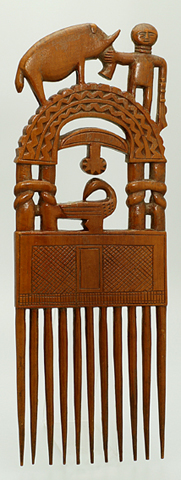
This comb reminds me of Edvard Munch’s “The Scream,” but it is decorated with a traditional diagonal mask from the Lwimbi people of Angola.
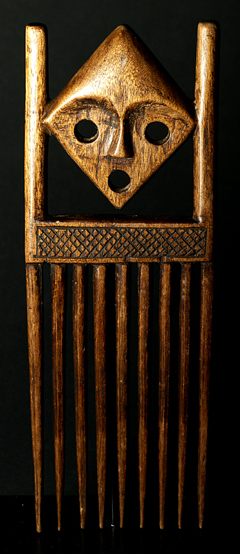
This comb reminds me of Magritte, but it is a symbol of feminine power made by the Dan people of the Ivory Coast.
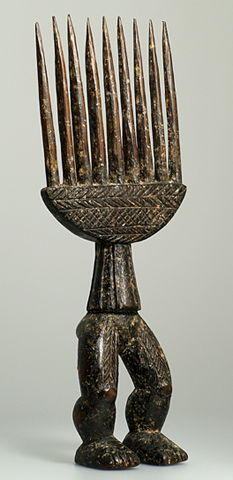
The Yaouré people of the Ivory Coast elongated the neck and beak of this bird so it would hold a comb on top of a mask. This technique of exaggerating animal features was famously used by Lalique when he interpreted Japanese combs through the lens of French Symbolist philosophy. I love the fact that skewed features were used in Africa independently of European Western thought.
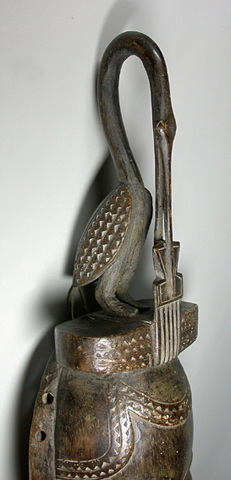
This is another superb piece of ivory carving by the Yaouré people of the Ivory Coast. It has been dyed with palm oil.
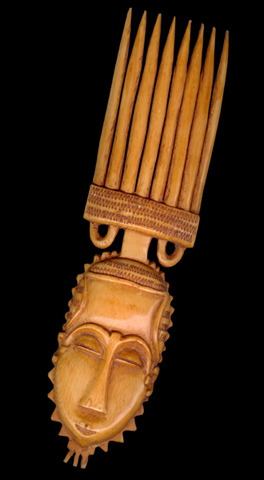
Our last comb is ivory in remarkable condition, and comes from the Akan people of Ghana. It portrays two ancestors standing in arches carved with intricate sacrificial decoration.
